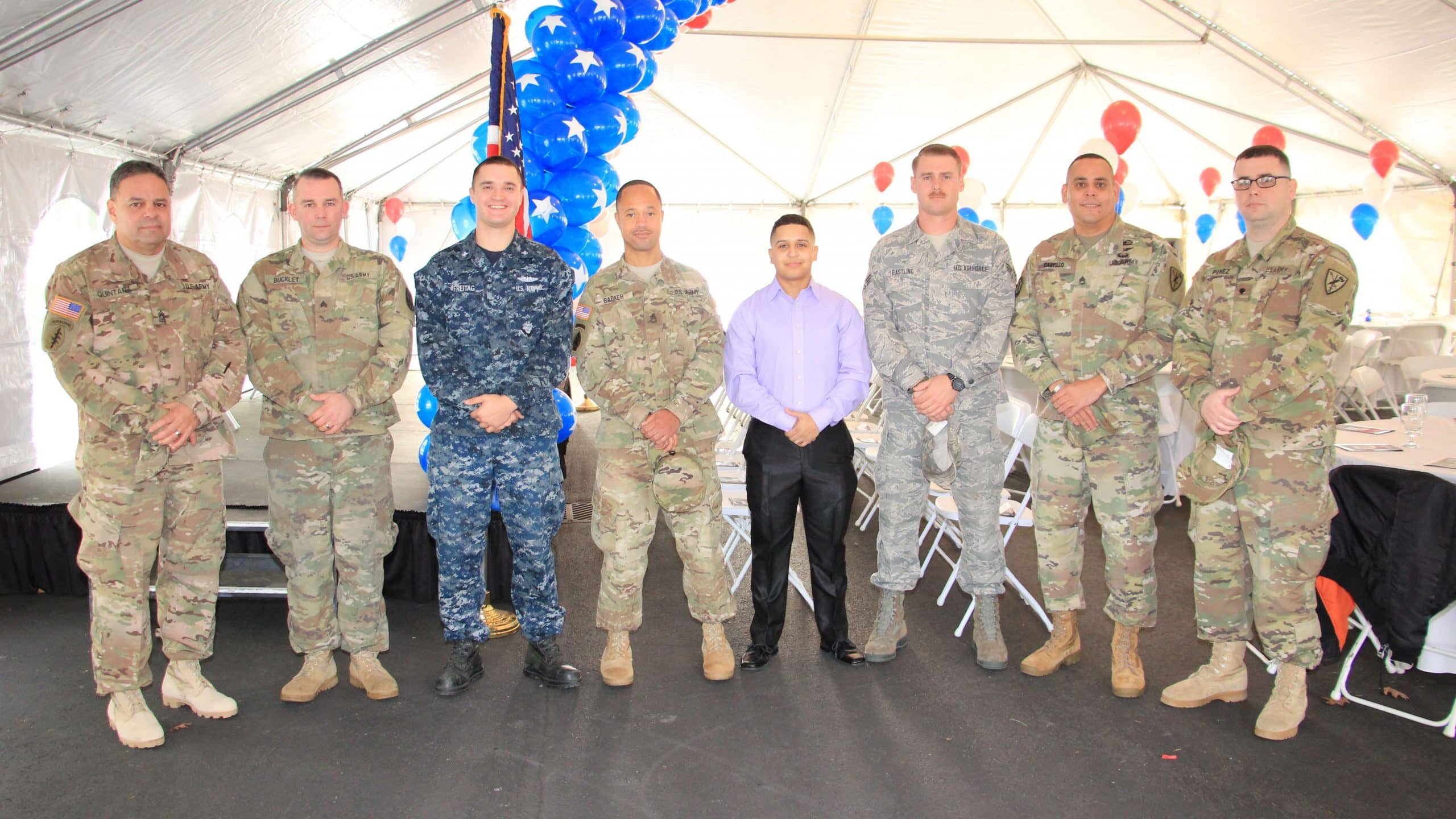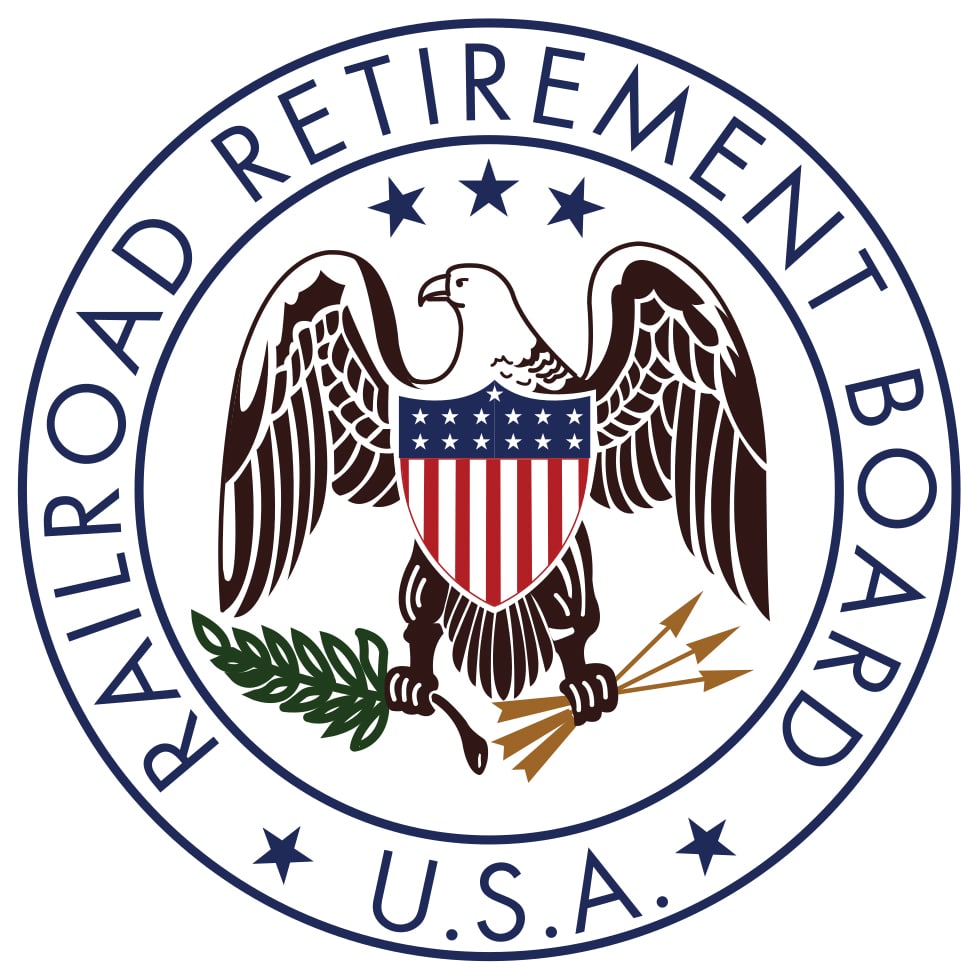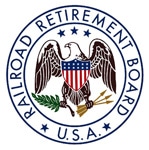Many railroad employees have served in the Armed Forces of the United States. Under certain conditions, their military service may be creditable as railroad service under the Railroad Retirement Act (RRA).
The following questions and answers provide information on how military service may be credited toward Railroad Retirement benefits.
1. Under what conditions can military service be credited as railroad service?
The intent behind the crediting of military service under the RRA is to prevent career railroad employees from losing retirement credits while performing active-duty military service during a war or national emergency period. Therefore, to be creditable as compensation under the RRA, service in the U.S. Armed Forces must be preceded by railroad service in the same or preceding calendar year. With the exceptions noted later, the employee must also have entered military service when the United States was at war or in a state of national emergency, or have served in the armed forces involuntarily. Military service is involuntary when an employee is required by law, such as Selective Service System conscription or troop call-up from a reserve unit, to leave railroad service to perform active duty military service.
Only active-duty military service is creditable under the RRA. A person is considered to have been on active duty while commissioned, or enrolled, in the active service of the Armed Forces of the United States (including the U.S. Coast Guard), or while ordered to federal active duty from any reserve component of the uniformed armed forces.
2. What are some examples of creditable service performed by a member of a reserve component, such as the Army Reserve?
Any military service a reservist is required to perform as a result of a call-up to active duty, such as during a partial mobilization, is creditable under the RRA, so long as the military service is preceded by railroad service in the same or preceding year.
Annual training duty as a member of a reserve component of a uniformed service is also considered active duty and may be creditable, provided the railroad employee service requirement is met. The period of active duty for training also includes authorized travel time to and from any such training duty. However, weekend alone or evening reserve duty is not creditable.
Active duty in a state National Guard or state Air National Guard unit may be creditable only while the reservist was called to federal active duty by Congress or the president of the United States. Emergency call-up of the National Guard by a governor for riot or flood control would not be creditable.
3. What are the dates of the war or national emergency periods?
The war or national emergency periods are:
- August 2, 1990, to date as yet undetermined.
- December 16, 1950, through September 14, 1978.
- September 8, 1939, through June 14, 1948.
If military service began during a war or national emergency period, any active duty service the employee was required to continue in beyond the end of the war or national emergency is creditable, except that voluntary service extending beyond September 14, 1978, is not creditable.
Railroad workers who voluntarily served in the armed forces between June 15, 1948, and December 15, 1950, when there was no declared national state of emergency, can be given Railroad Retirement credit for their military service if they:
- performed railroad service in the year they entered or the year before they entered military service, and;
- returned to rail service in the year their military service ended, or in the following year, and;
- had no intervening nonrailroad employment.
4. How can military service be used to increase benefits paid by the Railroad Retirement Board (RRB)?
Railroad Retirement annuities are based on length of service and earnings. If military service is creditable as railroad service, a person will receive additional compensation credits for each month of creditable military service and railroad service credit for each active military service month not already credited by actual railroad service.
Creditable military service may be used in addition to regular railroad service to meet certain service requirements, such as the basic 10-year or 5-year service requirements for a regular annuity, the 20-year requirement for an occupational disability annuity before age 60, the 25-year requirement for a supplemental annuity, or the 30-year requirement for early retirement benefits.
5. Can United States Merchant Marine service be creditable for Railroad Retirement purposes?
No. Service with the Merchant Marine or civilian employment with the Department of Defense is not creditable, even if performed in wartime.
6. Are Railroad Retirement annuities based in part on military service credits reduced if other benefits, such as military service pensions or payments from the Department of Veterans Affairs, are also payable on the basis of the same military service?
No. While Railroad Retirement employee annuities are subject to reductions for dual entitlement to Social Security benefits and, under certain conditions, federal, state or local government pensions, as well as certain other payments, Railroad Retirement employee annuities are always exempt from reduction for military service pensions or payments by the Department of Veterans Affairs.
7. Are the unemployment and sickness benefits payable by the RRB affected if an employee is also receiving a military service pension?
Yes. The unemployment and sickness benefits payable by the RRB are affected if a claimant is also receiving a military service pension. However, payments made by the Department of Veterans Affairs will not affect railroad unemployment or sickness benefits.
When a claimant is receiving a military service pension or benefits under any social insurance law for days in which he or she is entitled to benefits under the Railroad Unemployment Insurance Act, railroad unemployment or sickness benefits are payable only to the extent to which they exceed the other payments for those days. In many cases, the amount of a military service pension precludes the payment of unemployment or sickness benefits by the RRB. Examples of other such social insurance payments are firefighters’ and police pensions, or certain workers’ compensation payments. Claimants should report all such payments promptly to avoid having to refund benefits later.
8. Can proof of military service be filed in advance of retirement?
Yes. Railroad employees are encouraged to file their military service proofs well before retirement to expedite the annuity application process and avoid delays caused by inadequate proofs. Proofs can be mailed to an employee’s local RRB field office, or placed in the secure lockboxes/door slots outside of an RRB field office’s doors. (Lockboxes and door slots are checked daily.) Employee information will be recorded and stored electronically until an employee retires. All evidence brought or mailed to an RRB office will be handled carefully and returned promptly.
If employees do not have an official record of their military service, their local RRB office will explain how to get acceptable evidence.
9. How can an employee get more information about the crediting of his or her military service by the RRB?
More information is available by visiting the RRB’s website, RRB.gov, or by calling an RRB office toll-free at 1-877-772-5772. Persons can find the address of the RRB office servicing their area by calling the agency’s toll-free number or by clicking on the Field Office Locator tab at RRB.gov. RRB field offices currently offer limited in-person service by appointment. To schedule an appointment, call 1-877-772-5772. Individuals should bring a photo ID when visiting a field office, and, depending on guidance from the Centers for Disease Control and Prevention for the county in which the field office is located, may be required to wear an appropriate face mask. In such circumstances, if visitors do not have a mask, one will be provided for them.


 Many railroad employees have at some time served in the Armed Forces of the United States. Under certain conditions, their military service may be credited as rail service under the Railroad Retirement Act.
Many railroad employees have at some time served in the Armed Forces of the United States. Under certain conditions, their military service may be credited as rail service under the Railroad Retirement Act.